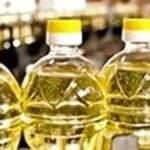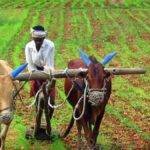Main Points In Hindi (मुख्य बातें – हिंदी में)
-
शील्क के उत्पादन में वृद्धि: देश में झींगा पालन तेजी से बढ़ रहा है, जिसमें उत्पादन 11 लाख टन को पार कर चुका है, लेकिन उच्च उत्पादन लागत के कारण अंतरराष्ट्रीय बाजार में बेचने में कठिनाई हो रही है।
-
बीज आपूर्ति में स्वदेशी विकास: झींगा पालन मुख्य रूप से अमेरिकी बीज L. vannamei पर निर्भर करता है, लेकिन अब भारत में भी स्वदेशी बीज तैयार किए जा रहे हैं, जिससे राष्ट्रीय स्तर पर बीज की आपूर्ति में आत्मनिर्भरता बढ़ेगी।
-
विशेष रोग मुक्त बीजों का उत्पादन: कोडियाघाट में राजीव गांधी केंद्रीय एक्वाकल्चर केंद्र द्वारा स्थापित न्यूक्लियस ब्रीडिंग सेंटर, झींगा के लिए विशेष रोग मुक्त (SPF) बीज और ब्रूडर प्रदान करने का कार्य कर रहा है।
-
मछली पालन की अपार संभावनाएँ: अंडमान और निकोबार द्वीप समूह में विशेष आर्थिक क्षेत्र (EEZ) में मछली पालन की बड़ी संभावनाएँ हैं, जहां अनुमानित वार्षिक उत्पादन क्षमता लगभग 1.48 लाख टन है, लेकिन अभी केवल 49 हजार टन का उत्पादन हुआ है।
- स्थानिक मार्केटिंग सुधार: डॉ. अभिलाक्ष लिक्की ने स्थानीय मछली बाजार (जंगलघाट) का दौरा किया और वहां के मछुआरों एवं विक्रेताओं के साथ संवाद किया, ताकि मछली विपणन और प्रबंधन में सुधार के तरीकों पर विचार किया जा सके।
Main Points In English(मुख्य बातें – अंग्रेज़ी में)
Here are the main points summarizing the provided text on shrimp farming and fisheries in India:
-
Rapid Growth in Shrimp Farming: Shrimp farming in India is experiencing significant growth, with production exceeding 1.1 million tonnes, primarily for export. However, high production costs pose challenges in selling shrimp in international markets.
-
Dependency on L. vannamei and Seed Development: The shrimp farming industry is largely reliant on the L. vannamei species, which is imported. Efforts are underway to breed local desi shrimp seeds in India, reducing dependence on foreign seeds.
-
Establishment of Breeding Centers: The Nucleus Breeding Center (NBC) in Kodiaghat aims to supply Specific Pathogen Free (SPF) seeds and broodstock for shrimp farming. Fisheries Secretary Dr. Abhilaksh Likhi highlighted the need for efficient supply chains for these essential resources.
-
Potential for Fisheries in Andaman and Nicobar Islands: The Exclusive Economic Zone (EEZ) around the Andaman and Nicobar Islands offers significant fisheries potential, with an estimated annual capacity of 148,000 tonnes. However, only a fraction of this capacity has been utilized so far.
- Interacting with Local Fisheries Stakeholders: Dr. Likhi visited the Janglighat fish market and landing center to engage with local fish sellers and fishermen, addressing their challenges and exploring ways to improve fish marketing, management, and overall operational conditions in the fishing sector.


Complete News In Hindi(पूरी खबर – हिंदी में)
देश में झींगा खेती तेजी से बढ़ रही है। हाल की आंकड़ों के अनुसार, देश में झींगे का उत्पादन 11 लाख टन से ज्यादा हो गया है। अधिकांश झींगे निर्यात किए जाते हैं। लेकिन उच्च उत्पादन लागत के कारण इसे अंतरराष्ट्रीय बाजार में बेचना मुश्किल हो रहा है। झींगा खेती पूरी तरह से L. vanmei पर निर्भर है, जो एक अमेरिकी बीज है। लेकिन अच्छी बात यह है कि अब भारत में भी झींगे के बीज तैयार किए जा रहे हैं। देसी बीज प्रजनन केंद्र में तैयार किए जा रहे हैं।
एक ऐसे प्रजनन केंद्र का दौरा मछली पालन सचिव डॉ. अभिलक्ष लिक्की ने बुधवार को किया। इसके अलावा, वहां उपस्थित अधिकारियों को ब्रोडर और बीज की आपूर्ति के लिए विशेष निर्देश भी दिए गए। झींगा विशेषज्ञों के अनुसार, वर्तमान में ज्यादातर राज्यों में झींगे के बीज आंध्र प्रदेश के झींगा हैचरी से सप्लाई किए जा रहे हैं।
और पढ़ें: पोल्ट्री अंडा: यदि आप अंडे के लिए मुर्गी पालन कर रहे हैं, तो पहले जान लें कि कौन सी मुर्गी कितने अंडे देती है।
कोडियाघाट से झींगा बीज की आपूर्ति होगी
मंगलवार को, डॉ. अभिलक्ष लिक्की ने अपने अंडमान दौरे के दौरान कोडियाघाट में राजीव गांधी केंद्र के तहत स्थापित पेनेउस मोनोडन के नाभिक प्रजनन केंद्र (NBC) का दौरा किया। इस केंद्र का उद्देश्य विशेष रूप से झींगा के लिए स्पेसिफिक पैथोजन फ्री (SPF) ब्रोडर और बीज की आपूर्ति करना है। इस दौरान, उन्होंने समुद्री उत्पाद निर्यात विकास प्राधिकरण (MPEDA) और RGCA के अधिकारियों को SPF P Monodon ब्रोडर और बीज की आपूर्ति के लिए आवश्यक निर्देश दिए।
EEZ में मछली पालन की बड़ी संभावनाएं
डॉ. लिक्की का कहना है कि विशेष आर्थिक क्षेत्र (EEZ) में मछली पालन के लिए बहुत संभावनाएं हैं। अंडमान और निकोबार द्वीप समूह में एक लंबी तटरेखा और विशाल भारतीय EEZ के साथ मछली पालन के संसाधन प्रचुर मात्रा में हैं। अंडमान और निकोबार द्वीप समूह की अनुमानित वार्षिक मछली पकड़ने की क्षमता लगभग 1.48 लाख टन है। इसमें से अब तक केवल 49 हजार टन का उत्पादन हुआ है। इसके अलावा, अंडमान और निकोबार द्वीप समूह में ट्यूना मछली पालन, समुद्री शैवाल और सजावटी मछली पालन केंद्र स्थापित करने की भी बहुत गुंजाइश है। इसलिए, डॉ. अभिलक्ष लिक्की ने द्वीपों में मछली पालन गतिविधियों का दौरा किया और वैज्ञानिकों, सरकारी अधिकारियों, उद्यमियों, मछुआरों, और मछली के विक्रेताओं के साथ बातचीत की।
और पढ़ें: मछली: सर्दियों में मछलियों को भी ठंड लगती है, बीमार होती हैं, उनके जीवन को बचाने के लिए उन्हें ऐसे दी जाती है गर्मी।
जंगलीघाट मछली मार्केट-लैंडिंग सेंटर का भी दौरा किया
डॉ. लिक्की ने जंगलीघाट मछली बाजार का भी दौरा किया। यह बाजार ब्लू रिवोल्यूशन योजना के तहत स्थापित किया गया था। इस मौके पर उन्होंने स्थानीय मछली विक्रेताओं के साथ बातचीत की और उनके सामने आने वाली चुनौतियों को समझा। मछली विपणन और प्रबंधन में सुधार के तरीके ढूंढने की कोशिश की। उन्होंने इस बाजार में उपलब्ध मछली की मात्रा और प्रजातियों के बारे में जानकारी ली और इसके रखरखाव को और बेहतर बनाने के तरीकों के बारे में भी पूछा। इस दौरान, डॉ. लिक्की जंगलीघाट मछली लैंडिंग सेंटर भी गए। उन्होंने मछुआरों के साथ उनकी वर्तमान मछली पकड़ने की प्रथाओं, पकड़ी गई मछलियों की विविधता, उनके आर्थिक पहलुओं, लैंडिंग केंद्रों में उपलब्ध सुविधाओं और मौजूदा संचालन की चुनौतियों के बारे में विस्तार से बातचीत की। मछुआरों ने ड्रेजिंग, पानी की सुविधाएं, बर्फ के प्लांट, डीजल सब्सिडी आदि जैसे मुद्दों पर चर्चा की और इन समस्याओं को हल करने के लिए अनुरोध किया।
Complete News In English(पूरी खबर – अंग्रेज़ी में)
Shrimp farming is increasing rapidly in the country. If we look at the latest figures, the production of shrimp in the country has crossed 11 lakh tonnes. Most of the shrimp are exported. But due to high production cost, there is difficulty in selling it in the international market. Shrimp farming is completely dependent on L. vanmei. This is American seed. But the good thing is that now seeds for shrimp are being prepared in India also. Desi seeds are being prepared in the breeding centre.
One such breeding center was visited by Fisheries Secretary Dr. Abhilaksh Likhi on Wednesday. Besides, special instructions were also given to the officers present there to supply both brooder and seeds. According to shrimp experts, at present, seeds are supplied from shrimp hatcheries of Andhra Pradesh in most of the states across the country.
Also read: Poultry Egg: If you are rearing chickens for eggs, then first know which chicken lays how many eggs.
Shrimp seed will be supplied from Kodiyaghat
On Tuesday, Dr. Abhilaksh Likhi, during his Andaman tour, visited the Nucleus Breeding Center (NBC) of Penaeus monodon established by Rajiv Gandhi Center for Aquaculture (RGCA) in Kodiaghat. The objective of this center is to supply Specific Pathogen Free (SPF) brood and seed especially for shrimp. On this occasion, he gave necessary instructions to the officials of Marine Products Export Development Authority (MPEDA) and RGCA to supply SPF P Monodon brooders and seeds to the hatchery.
There is a lot of potential for fisheries in EEZ
Dr. Likhi says that there is a lot of potential for fisheries in the Exclusive Economic Zone (EEZ). The Andaman and Nicobar Islands have abundant fisheries resources with a long coastline and vast Indian EEZ. The estimated annual fisheries capacity of Andaman and Nicobar Islands is about 1.48 lakh tonnes. Out of this, only 49 thousand tonnes have been produced so far. Not only this, there is a lot of scope for setting up fish farming centers including tuna fish farming, seaweed and ornamental fish farming in Andaman and Nicobar Islands. Therefore, Dr. Abhilaksh Likhi, Secretary, Department of Fisheries, Ministry of Fisheries, Animal Husbandry and Dairying, Government of India, visited the fish farming activities in the islands and interacted with scientists, government officials, entrepreneurs, fishermen, fish sellers. of.
Also read: Fisheries: In winter, fish also feel cold, become sick, to save their lives, they are given warmth like this
Also saw Janglighat Fish Market-Landing Center
Dr. Likhi also visited Janglighat fish market. This market was established under the Blue Revolution Scheme. On this occasion, he interacted with local fish sellers and understood their challenges. Find ways to improve fish marketing and management. He took information about the quantity and variety of fish available in this market and also asked about ways to further improve its maintenance. During this time, Dr. Likhi also went to Janglighat Fish Landing Centre. He had an in-depth interaction with the fishermen about their current fishing practices, diversity of fish caught, their economics, facilities available at the landing centers and current operational challenges. The fishermen discussed issues like dredging, water facilities, ice plants, diesel subsidy etc. and requested to resolve them.








